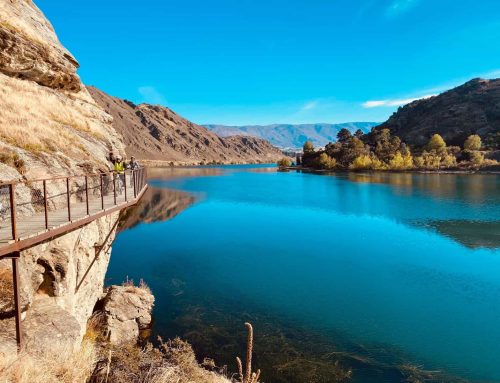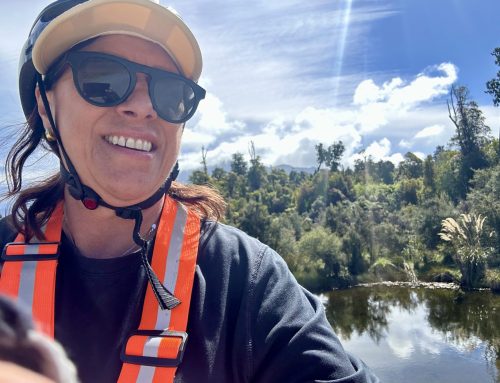I have had a great response to my Explore NZ post lockdown – Catlins story, so thought I would add another close destination, Taiaroa Head, Dunedin.
If you decide to head south for a break, combine the two destinations and have a great South Island experience.
My Taiaroa Head experience
Several years ago I explored what I call ‘New Zealand’s most southern zoo,’ Taiaroa Head. It’s at the end of the Otago Peninsula. It’s an easy drive from Dunedin City, but if you get the opportunity to see it from the water you’ll experience unbelievable, remote wildlife.
The story was published in the Australian Travel Magazine, International Traveller.
The Birds And The Seas
At Taiaroa Head, an albatross soars overhead. It’s cold and bleak on the ocean.

Albatross at Taiaroa Head
I haven’t seen an albatross before but then I haven’t visited Taiaroa Head before. I’ve come hoping to see one albatross but I’ve already seen 20. Maybe some are the same ones, but I feel the sky is full of them.
With my feet abreast I brace myself, enjoying the elements, as the M.V. Monarch surges with the swell. The wind blows a strand of hair into my eye. It’s watering. I wipe it as I turn my head to see an albatrosses glide directly above. They are mostly juvenile birds, but their wingspans are still up to three metres. When they fly there is no sound from these finely tuned, aerodynamic birds. As their wings lock, their gracious soar is silent.

Seeing the wildlife along the Dunedin Penninsula from M.V.Monarch
Our skipper, Ed Ansell, tells me these adolescent birds are coming back to the colony for the first time since leaving their nests to court and eventually find a life partner. They have been at sea for five years without touching land and will spend over 90 per cent of their life on or over the water.
While the young are preening themselves and practising their synchronised flying to impress other young albatross, the mature birds are also returning to the colony to meet up with their life partners and mate once again.

A mature albatross at Taiaroa Head
During a females fertile years, she produces a chick every second year. When their fledgeling leaves the nest, both adult birds return to the sea, alone. Many months later they arrive back to the colony, often within days of each other to mate and raise another chick together.
While the presence of these large sea birds dominates Taiaroa Head during mating season they are by no means the only inhabitants.
Our skipper manoeuvres the boat close to the rocky shore. Three New Zealand fur seals, easily recognised by their tiny ears, are sitting on the rock ledge as the kelp swirls beneath them. Sucked in by the tide and forced back out, the dancing kelp produces sea mist to keep them moist.

Spot the harem of fur seals on the rocks
A younger male fur seal attempts to climb the rocky shelf to join the harem but is quickly nudged back into the ocean by a mature bull protecting his females.
It’s breeding season for the fur seals too and soon these females will give birth to their pups. Almost immediately, the bull will mate with the females however delayed implantation in the uterine wall, means the pup will be born 12 months later, although the gestation period is nine months.
The female will suckle her pup for about 300 days, alternating with foraging trips of up to 20 days at sea.
Leaving the harem the skipper takes us northwest off Wellers Rock until we are under a vertical cliff. Covered in dropping and unusual nests, Ansell explains the cliff face is home to the Stewart Island Shag, also known as the Bronze Shag.
These chunky, unattractive birds with a high pitched squawk come and go from their chimney pot-shaped nests made out of organic material and guano (excrement of seabirds). Cemented to the rock, they face the prevailing wind for easy takeoff.
While so many of the Southern Ocean inhabitants are best seen from the water, the world’s smallest penguin, the Blue Penguin is an exception.
Each evening, around dusk the penguins can be seen returning from a day feeding at sea. As the light fades we patiently wait on the viewing platform and our guide explains how the penguins congregate into small groups called “rafts” before coming ashore.
No sooner does he finish telling us and we see ripples on the water and hear the penguins shallow squeal. After a short swim, a wave finally washes them ashore and they fumble to standing, shaking themselves dry. Exhausted, they shuffle up the beach to their burrows to feed their complaining young.
Not far up the hill from the penguin’s nests is the Royal Albatross Centre. It is a wildlife reserve and the albatross chicks can be seen as their parents fly in to feed them. Large, white and fluffy, the chicks are nurtured by their parents until they leave the nest at nine months old.

A young albatross chick
The Southern Ocean zoo is prospering. From just three breeding pairs of albatross in the 1930s, the world’s only mainland colony has grown to over 140 breeding birds, the seal population is flourishing, the sea lions are breeding and the birdlife prolific.
It may not be your regular zoo, but to see them in their natural habitat is exhilarating.
To read more about this great southern destinations, read Explore NZ post lockdown – Catlins






Very good account but the correct name is Otago Peninsula. Dunedin is only the name of the city
Thanks for pointing that out Christine – much appreciated. I have corrected it